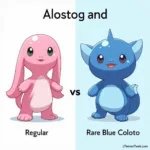Orange, a vibrant and energetic color, evokes feelings of warmth and enthusiasm. But what happens when you want to create a visual balance or explore contrasting hues? Understanding the color wheel and the concept of complementary colors is key to answering the question: what color is opposite of orange? The answer lies in the realm of blue.
Decoding the Color Wheel and Complementary Colors
The color wheel, a visual representation of colors arranged according to their chromatic relationships, is an essential tool for artists, designers, and anyone working with color. It allows us to understand how different colors interact and create harmony or contrast. Complementary colors sit directly opposite each other on the color wheel, offering the strongest degree of contrast. For orange, its complementary color is blue. This vibrant contrast is often used to create dynamic and eye-catching visuals.
Exploring the Nuances of Blue: The Opposite of Orange
While we say blue is the opposite of orange, it’s important to recognize the diverse spectrum within blue itself. A bright, true blue offers the most striking contrast against a vibrant orange. However, variations like teal, sky blue, or navy blue can also create interesting and sophisticated color combinations with orange. Choosing the specific shade of blue depends on the desired mood and aesthetic. For example, pairing a burnt orange with a deep teal can create a rich, autumnal palette, while a vibrant orange with a sky blue can evoke a tropical, summery feel.
 Orange and Blue: A Vibrant Complementary Color Pair
Orange and Blue: A Vibrant Complementary Color Pair
Why is Knowing the Opposite of Orange Important?
Understanding complementary colors is a crucial aspect of color theory. It’s invaluable for creating visual harmony, achieving balance, and making informed color choices in various fields, from interior design and fashion to graphic design and painting. Knowing that blue is the opposite of orange allows you to:
- Create Visual Interest: The high contrast between orange and blue creates a dynamic and visually stimulating effect that catches the eye.
- Achieve Balance: Using complementary colors in a design can create a sense of balance and equilibrium, preventing one color from overpowering the other.
- Neutralize Colors: In situations like color correction or makeup, knowing complementary colors can help neutralize unwanted hues. For example, blue-based concealers can neutralize orange tones in blemishes. Similar to how we understand what color concealer for bruise, knowing color opposites helps in creating a balanced look.
- Enhance Color Vibrancy: Placing complementary colors next to each other can intensify their vibrancy, making both colors appear more saturated. This is often used in art and design to create bold and impactful imagery.
Practical Applications of the Orange and Blue Contrast
The dynamic contrast between orange and blue isn’t limited to theory; it finds practical application in various domains:
- Interior Design: Using blue accents in an orange room, or vice-versa, can create a balanced and visually appealing space. This knowledge also complements understanding what colors go good with light green for a broader perspective on interior color schemes.
- Fashion: Orange and blue can be paired together in clothing and accessories to create a striking and fashionable look.
- Branding and Marketing: The high contrast of these colors can be used in logos and marketing materials to grab attention and create a memorable brand identity.
- Art and Painting: Artists often utilize the orange and blue contrast to create depth, drama, and visual impact in their artwork, particularly those exploring what are saturated colors.
What’s the opposite color of a muted orange?
The opposite of a muted orange, like a terracotta or burnt orange, would be a muted blue, such as a slate blue or a dusty teal. The principle of complementary colors still applies, but the intensity is toned down for a more subtle effect.
How do I find the true opposite of any orange shade?
Using a color wheel is the most accurate way to determine the opposite of any specific shade of orange. Locate your orange hue on the wheel, and the color directly across from it will be its complement.
Can I use more than two complementary colors together?
While the most impactful contrast comes from pairing two direct complements, you can incorporate other colors into your palette. Using analogous colors (colors adjacent to each other on the color wheel) can create more complex and nuanced color schemes.
Conclusion
Understanding that blue is the opposite of orange opens up a world of possibilities in color manipulation and design. Whether you’re an artist, designer, or simply someone who appreciates the power of color, knowing how to use complementary colors effectively can enhance your creativity and bring your vision to life. So, embrace the vibrant contrast of orange and blue, and let these colors inspire your next creative endeavor. If you need support in color selection for your home, contact us at Phone Number: 0373298888, Email: [email protected] or visit us at 86 Cau Giay, Hanoi. We have a 24/7 customer service team.

